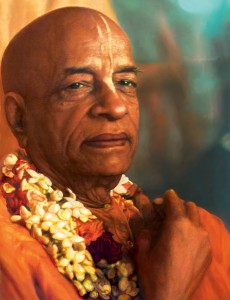Written by Ramanatha-sukha das ACBSP
Every ISCKON temple believe their deities are “special”. Some enthusiastic devotees may even say that Krishna will “wink” at you, or that the deities’ outfits grow in size as the deities grow from all the opulent offerings. Older outfits can no longer fit. At the Radha Krishna Temple in downtown London, there are unique historical aspects of Radha Londonisvara that need to be clarified and elaborated on.
1) The foremost important characteristic of Radha Londonisvara is that They are the very first large marble Radha-Krishna deities within ISKCON. This distinct status is perpetual.
Srila Prabhupada explains in SB 3.21.32: “With one candle one may light a second candle, with the second a third and then a fourth, and in this way one can light up thousands of candles, and no candle is inferior to another in distributing light. Every candle has the full potential candlepower, but there is still the distinction that one candle is the first, another the second, another the third and another the fourth. Similarly, there is no difference between the immediate expansion of the Lord and His secondary expansion.”
Many devotees believe that because Radha Londonisvara are the first large marble Radha-Krishna deities within ISKCON, then all other Radha-Krishna deities in the Hare Krishna movement are in one sense expansions from Them. They are all equal, yet different according to time, place, and circumstance.
2) Radha Londonisvara are also distinctive because of the way They revealed Themselves to Srila Prabhupada and the devotees just three days prior to the scheduled temple opening. Many senior devotees appreciating this exceptional lila with Srila Prabhupada have understood Radha Londonisvara to be “self-manifesting” deities. They appeared due to the intense desire of Srila Prabhupada to serve Them in downtown London. This unprecedented pastime defines Radha Londonisvara as “self-manifesting”. There are no other deities in ISKCON that can be appreciated in this way. Many of the deities in the early developmental years of Vrindavan are also understood as self-manifesting.
These would include Radha Govindaji of Rupa Goswami, Madanmohan of Sanatana Goswami, Radha Gopinath of Paramananda Bhattacharya and Madhu Pandit Goswami, and Radharaman of Gopal Bhatta Goswami. All devoteepilgrims to the Radha-Krishna Temple in downtown London are most fortunate to have Sri Sri Radha Londonisvara’s exclusive darshan, prasadam, and be able to participate in Their seva-puja. They are not only exceptionally beautiful, but Their mercy is uncommon and extraordinary. Srila Prabhupada on many occasions expressed profound attraction and devotion to Their Lordships.
3) The issue of installing Deities who have some small “defect” needs more clarification. As indicated by the story from Prabhupada’s Lilamrita, some Hindus would not approve of using so called defective deities. As a pure representative of the Caitanya Vaishnava lineage, Srila Prabhupada was not very concerned with the strict standards of Hinduism established by Smarta Brahmins. This form of Hinduism in many ways is antithetical to pure Krishna Bhakti from the Caitanya tradition. The Smarta Brahmins follow a lineage from Sankaracharya that promote a philosophy of worship where “bhakti” eventually leads a devotee to “merging” with the impersonal Brahman effulgence. To a devotee, such merging is a kind of spiritual suicide. Srila Prabhupada and his disciples could clearly perceive that the unprecedented manifestation of Radha Londonisvara was part of “Krishna’s trick” in order that They could be established within ISKCON and be perpetually worshipped in downtown London. The Supreme Lord can be very cunning. The deity is not an idol/statue that is meant to be worshipped in order to achieve impersonal moksha. By the mercy of Srila Prabhupada, the pure devotee of Radha-Krishna, Radha Londonisvara have manifest in the important city of London to help all variety of devotees develop pure prema-bhakti, now and into perpetuity. The supreme perfection of Krishna consciousness, to go back home, back to Goloka Vrindavan, is possible for all who take shelter of Them.
4) There is also an exceptional story about the two small vyasasanas on the temple altar. This story is narrated by a disciple of Srila Prabhupada named Padmalocana das: “A new vyasasana was being made for Srila Prabhupada and I was asked to help upholster it. That day most devotees went to the airport to welcome Prabhupada, but a small group of us were still trying to finish the vyasasana before he arrived. It was green with gold trim, and we were focussed on getting it finished and into the temple room. When Prabhupada did arrive and came into the temple, immediately everyone began offering obeisances and I was completely overwhelmed; I’d never seen such a personality. I had extreme emotions of crying and was quite overwhelmed. Prabhupada had darshan, sat down on the new vyasasana, and started giving a lecture. Just as he finished the lecture, he mentioned something about the vyasasana, ‘Oh, this is very nice.’ Then he went upstairs to his quarters. After a few minutes some devotee called down the stairs, ‘Haribol! Padmalocana prabhu! Prabhupada is saying something about the vyasasana, you should come up here.’ So, I went up and Prabhupada said to me, ‘I want two more small size vyasasanas because every day Lord Brahma and Narada Muni come for the evening arotik and there should be a vyasasana for each of them. They should look identical to my own, but in a smaller size.’ I think we finished them on that same day, and next morning they were placed on the altar. So Prabhupada showed his appreciation when the next day. He said, ‘Yes, yes, they should always stay and be next to Radha-Londonisvara.’ Again, he told everyone, ‘Everyday Lord Brahma and Narada Muni come here for the evening arotik.’”
There is no other temple within ISKCON that has this peculiar feature of two small vyasasanas on the altar. Srila Prabhupada had a remarkable vision and blessing that Narada Muni and Lord Brahma come to Radha Londonisvara in the evening and that their combined presence can be felt by the attending devotees.
5) In the early 1980’s Giriraj came to take shelter of Radha Londonisvara’s lotus feet. The Govardhan sila (stone from Govardhana hill) became the “functional” deity by which the large marble deities are worshiped and bathed every morning. In almost all other ISKCON Radha Krishna temples, the functional deities are a small set of brass Radha Krishna murtis. Ever since the addition of Giriraj, the downtown London temple embodies the mood of Vrindavan and Vraja bhakti. For those devotees who appreciate the confidential relationship of Giri-Govardhan and Radha Krishna, this unique feature adds another layer of appreciation for the worship of Radha Londonisvara.





